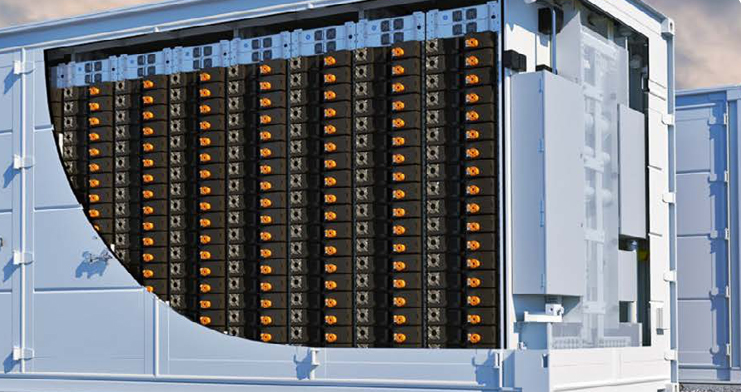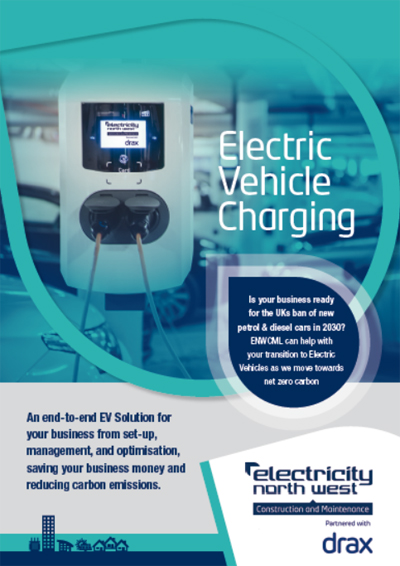Working with the Tyndall Centre for Climate Change Research, we have produced detailed guidelines on the immediate steps that different types of businesses can take to help tackle climate change by reducing their carbon emissions from:
The report recommends best practice interventions for specific business areas which are summarised below.
Generation Assets
Behind the Meter

Onsite generation of power can be derived from a range of technological solutions. Depending on the process it’s designed to power will dictate which technology is best suited for your application. Other factors to consider are the environmental and economic effects of installing on site generation and how this may influence your chosen application.
We are seeing more and more customers installing their own power sources on-site instead of purely relying on gird produced power. These are now known as ‘prosumers’, consumers of energy who produce and consume at source. The effects of this are that you can increase the resilience at your premises, whilst also reducing your cost of energy to power your process’s. The added benefit of this is if the chosen technology is producing ‘green’ energy from a renewable source such as solar PV, you are massively reducing your carbon footprint by not relying solely on grid distributed power. Equally, a mix of a Gas engine with a solar PV installation, can be a balanced generation profile at all times, with the diversity of both high operational savings (from the Gas element) and strong carbon benefits (from the Solar PV).
The process’s that are needed to be powered will be the most influential factor in deciding which technology is most suitable. ENWCML are able to assess and design the most appropriate solution for your needs, evidencing the payback on the capital outlay or where possible presenting a funded solution. Understanding your sites requirements and limitations, whilst also understanding the grid constraints in the local network area are all key to ensuring that the solution put forward is not only suitable for your needs but compatible at the site overall. ENWCML are able to assist with initial desk top analysis, site feasibility studies, grid applications, the construction of the installation and the ongoing maintenance of all the solutions we propose.
Committed to protecting our customers, people and environment
With our own in-house Health, Safety, Environment and Quality (HSEQ) team responsible for the implementation of policy and standards, we work to some of the most stringent safety standards in the industry. Our operational procedures, safety standards and delivery capability has enabled the company to attain the following accreditations:

Cost Effective & Reliable
Solar Power
A cost effective, reliable and versatile solution for distributed generation and self-sufficient energy and we are now able to offer Solar Photovoltaic (PV) to both existing and new customers. Solar power is still at the heart of tailored, distributed generation solutions due to its cost-effectiveness, reliability, versatility and speed of deployment and now our solar electricity installed solutions can help meet your energy needs without any up-front direct capital expenditure in the scheme.
With a choice of smart funding solutions, you decide how you fund the switch to low carbon energy. This can be installed as a complete turnkey purchase option or as a fully funded power only solution, whereby the electricity is delivered and billed through a long-term power purchase agreement (PPA), giving you a known cost of energy for the duration of that PPA.
We are targeting a 20% reduction in the cost of energy, for all energy consumed from the Solar PV, compared to the current cost of energy purchased at your site.
With our knowledge of the electricity market and connections throughout the North West, we are ideally placed to offer a Solar PV installation to our customers. As a tried and tested technology, Solar PV is one of the most efficient low-carbon generation technologies on the market.
Solar PV is a proven form of renewable energy generation, typically installed on the roof of a building but can also be ground mounted, Solar PV converts light energy into electricity and is able to provide onsite generation to power your building or operations.
As we move towards a decarbonised energy system Solar PV is one of the most proven technologies to be installed to aid our shift towards a less carbon intensive energy supply. Solar PV has no moving parts and thus operation and maintenance for these systems is relatively low compared with other behind the meter generation assets such as diesel engines. It allows you to create your own energy on site and have less reliance on grid supplied power whilst also reducing your organisations carbon footprint and electricity costs.
Most business operators have recognised the sense in deploying low carbon energy as a part of their whole energy demand solution. The government and the district network operators including Electricity North West plc are committed to encouraging and supporting locally generated energy solutions, with grants and smart funding solutions available. Electricity North West (Construction & Maintenance) Limited provides engineering and maintenance solutions for businesses across the UK and is able to install your Solar PV system whether it be designed as a roof, ground or as a carport system.
The right solution for you will be determined following our free initial consultation and desktop outline business proposal. Working with our partners SAS ENERGY, one of the UK’s leading EPC contractors in Solar PV, before we begin any project we need to collect the data on energy usage for your site to ensure that any system we design is specifically built for your energy needs. By reviewing the data collected we are able to provide a desktop proposal which outlines both CAPEX and funded options for your proposed solar PV system.
FREE Feasibility Study
We would appreciate the opportunity to explore the potential of installing Solar PV at your site(s). This would be a free of charge activity, which would allow us to work with you to understand the feasibility for an installation and to create a complete business case for you to consider.

Contact us now for a quote for Solar Panel Installation
Call: 0845 0702520 for further information on our Solar PV Solution or email us at: sales@enwcml.co.uk. Alternatively complete the form below.
Lowering Your Energy Comsumption
LED Lighting
Commercial and Industrial lighting is a key driver to help businesses reduce their operations and maintenance costs by up to 80%. Each workspace is different and therefore requires a bespoke/ tailored design to ensure uniformity and colour rendering index (CRI).
LED lighting can have an enormous impact on your bottom line and your carbon footprint. Installing energy efficient LED lighting will limit operational costs through reduced downtime and lower energy consumption, keeping your employees safer and improving productivity whilst reducing your CO2 emissions. EMWCML works alongside their customers to deliver bespoke SMART lighting solutions including consultation, lighting design, project management and installation. All our energy-efficient projects are consistently delivered on time and meet client ROI expectations.
ENWCML are also able to offer finance on many projects for the installation of energy-efficient LED technology, there is no better time to talk to us and book your free no-obligation site survey to find the right solution for you.
Benefits of LED Lighting
Delivering your EV Evolution
Electric Vehicle Charging
Our electric vehicle (EV) experts make sure your EV integration journey goes smoothly whilst bringing financial and environmental benefits to your organisation. We can help you by creating and delivering a suitable EV strategy (or work with your existing plan and infrastructure) and can also support you with individual vehicles and charging points through to end-to-end fleet solutions. To achieve this, we analyse your telematics data and optimise usage – both now and in the future.
We’ll help you build a bespoke business case that supports your transition to EVs, highlighting benefits such as cheaper running costs and charging with our 100% renewable sourced power. We’ll also explore how generating your own electricity could fuel your EVs while reducing your reliance on the grid.
Expertise means EV ease: Working in partnership with you, we’ll provide a one-stop-shop solution to make your life easier. Our planned route to EV integration will give you control of your energy, help you achieve your sustainability goals, reduce your costs overall and potentially, create new income stream.

The most competitive energy prices on the market
Energy Procurement Services

Finding energy contracts for your business is a time-consuming process. It’s also quite a stressful process if you don’t know anything about energy, the jargon used across the industry and most importantly how much you should actually be paying for your electricity. There are hundreds of different suppliers in the market with a variety of different tariffs, making energy procurement and management even harder for businesses. That is why it’s important to ensure that you source the best deal from the most competitive suppliers.
ENWCML are able to give you access to the most competitive energy prices on the market. We do not act as a typical third party introducer, instead we gather the data on behalf of the customer and present them with an offer. There are no hidden margins, and the customer is assured to get the most competitive deal on the market.
Every business is different. That is why we work with you to find a renewable energy plan that supports your priorities. Fixed Plans allow you to focus on running your business and give you predictable energy pricing. Flex Plans allow you to watch the market and control when you buy your electricity.
Fixed Supply Contract
Cost Simplicity
You prefer to secure your prices up-front and don’t want to have to constantly think about energy costs.
Low Risk
You want to manage your budget efficiently and avoid the risk of buying energy at the wrong time.
The Right Use of Your Time
You want to spend time running your business, not monitoring energy price movements.
Lower Energy Consumption
If your business uses less than 2GWh, you’re unlikely to save money tracking the market.
Flexible Supply Contract
Cost Control
As prices rise and fall, you want to control when you buy power to manage market fluctuations.
Wholesale Energy
You want to dedicate resources tracking the market and take advantage of wholesale price movements.
The Right Team
You want exclusive access to market data and support from our dedicated Flex traders.
Higher Energy Consumption
If your business uses more than 2GWh, you could mitigate risk and make savings tracking the market
Full Renewable Tariff
With access to renewable generators in the UK, we are able to offer a green renewable tariff to all of our customers.
For businesses, renewable energy has the potential to generate savings as well as commercial opportunities. It also helps companies to meet their CSR commitments, to appeal to customers and stakeholders focused on sustainability, and to make a positive contribution to the environment.
With so many benefits, it has to be time to think about switching – doesn’t it?
If your business is considering a move to renewable energy, ENWCML are happy to discuss your options and help you discover what is best for your needs.

At The Forefront of the Sector
Hydrogen Fuel Cell Technology
In response to the growth of the Hydrogen economy and the targets outlined in the UK’s path to Net Zero Carbon, we have taken a keen interest in the part Hydrogen will play in our future energy scenario. ENWCML Energy are at the forefront of the sector when it comes to new generation, production and distribution of energy, we see Hydrogen as a key player as a future fuel for energy generation.
Clean Hydrogen can displace fossil fuels in hard to decarbonise sectors, either by burning it in power plants to replace natural gas, coal and oil, or by converting it to electricity through Hydrogen fuel cells.
Hydrogen can also be used to store and transport intermittent renewable power at a grid scale. As wind and solar become a large percentage of electricity supply over time, the electric grid will need large scale electricity storage to offset periods of low wind and low light. By converting electricity to hydrogen, the energy can be stored over long periods of time either in pipelines and tanks.
Hydrogen Production, Generation and Uses
Electrolysers are the key component of green hydrogen supply. These units use electricity to split water into O2 and hydrogen. Many companies are now scaling up their production of these units to cope with the huge supply in demand.
Fuel cells are the reverse of electrolysers, convert hydrogen or other gas inputs to electricity with water as a by-product. As this is a chemical reaction there is no combustion and therefore a very sustainable form of producing energy.
Over time Hydrogen Refuelling Stations (HRS) are expected to move from specialized truck, bus and train depots to mainstream petrol station forecourts. Other applications include the decarbonization of portable power from diesel and petrol-powered generators to hydrogen powered units. Demand for localised hydrogen production is growing quickly and we are seeing more applications for its use across different sectors.
The Hydrogen Sector has £741bn Market Potential by 2040
A 200x icnrease in clean Hydrogen supply is anticipated from 2019 to 2030 i order to achieve Net Zero, clean hydrogen could be 20% of the energy mix by 2050.
ENWCML Energy are making sure they are positioned perfectly to understand how this market is developing and how the commercial and economic models are evolving.
We’re members of the UK Hydrogen and Fuel Cell Association


As a UK first, ENWCML have partnered with fuel cell technology provider, Bloom Energy to promote the use of hydrogen behind the meter to generate clean AlwaysON power. Bloom Energy is a global leader in Solid Oxide Fuel Cell technology (Energy Server), and micro-grid solutions, with over +600MW in operation at over 700 sites including mission critical installations with energy intensive clients. The technology has been responding to clients’ requirements of resiliency, reliability, efficiency, and reduced emissions. It is constituting a major part of client roadmaps to Net Zero emissions, as the assets provides a future proof solution aligned to the development of hydrogen economy and environmental legislations. We supply, install and maintain Solid Oxide Fuel Cells, providing our customers with products and support throughout the life cycle of their systems.
Battery Storage
Battery as a Service (BaaS)

Do you have an energy demand?
Do you have an energy demand or does your site have land to place a 40ft container? Then you can make an additional revenue from assisting the UK electricity grid move towards a more renewable energy mix.
We install, operate and maintain Battery Storage systems at customer sites to offer a range of services both to the
grid and to the site operator where applicable.
Some of the benefits of installing a Battery at your premises can be:
How Does it Work?
Battery Energy Storage Systems (BESS) are installed either in Front of the Meter (FtM) or Behind the Meter (BtM). Both types of installations can aid the grid frequency by operating in slightly different ways.
FtM Installations
Typically larger in size and look to partake in the frequency balancing markets to generate revenue. The last few years have seen these installations increase in size and voltage connection and now see huge projects looking to connect at Transmission level 132kV and above at over +400MW capacity. These types of projects are huge in both DEVEX and CAPEX and are difficult to develop.
The market has matured at a rate over the last 3-4 years meaning more capital is available to finance these but also making them extremely competitive to develop, there is only a finite amount of capacity on the grid.We see an opportunity to develop much smaller systems at lower voltages but at scale, using existing grid connections at sites or on land at I&C sites we can scale the installed capacity to rival the larger projects.
Benefits to you for FtM: We would look to rent land from you to house the BESS, we would pay you a ground rent per annum and would install, connect and maintain the system for the period of the lease. Typical ground rents range from £1000 – £2000 per annum per MW installed and are linked to CPI inflation year on year. For giving up the size of a carpark space you could earn an extra revenue stream whilst helping the connection of more renewable energy across the UK.
BtM Installations
BESS projects are installed using a sites grid connection, this type of installation is typically smaller in capacity size than FtM but cheaper as there is no need to apply for new grid connection. BtM systems can import/export to the grid using the sites meter or can use the sites load.
We would look to match the size of system to your sites load or your Maximum Import Capacity (MIC), since the introduction of the targeted charging review you are charged for your connected capacity as a standing charge not just usage. Therefore, any spare capacity you are charged for, a BESS can help pay towards these charges meaning you don’t have to give up your MIC.
Benefits to you for BtM: Allowing the BESS system to operate BtM gives embedded benefits of resilience and load shifting to avoid peak red zone periods. Renting of the land and ground rent expectancy are the same as listed for FtM and also linked to CPI inflation. The embedded benefits of installing a BESS are for the
benefit of the site.





